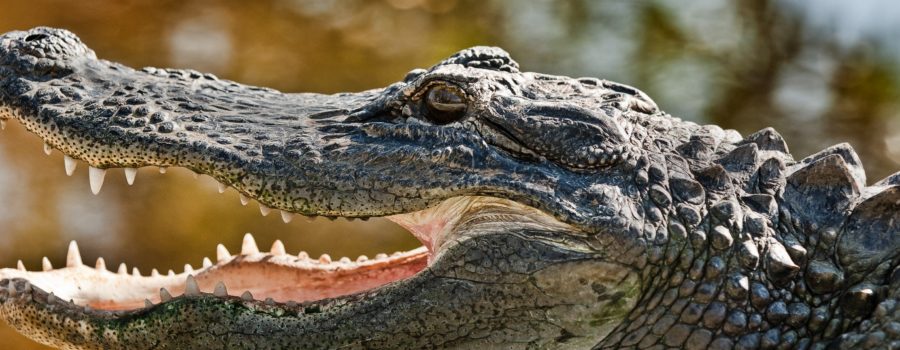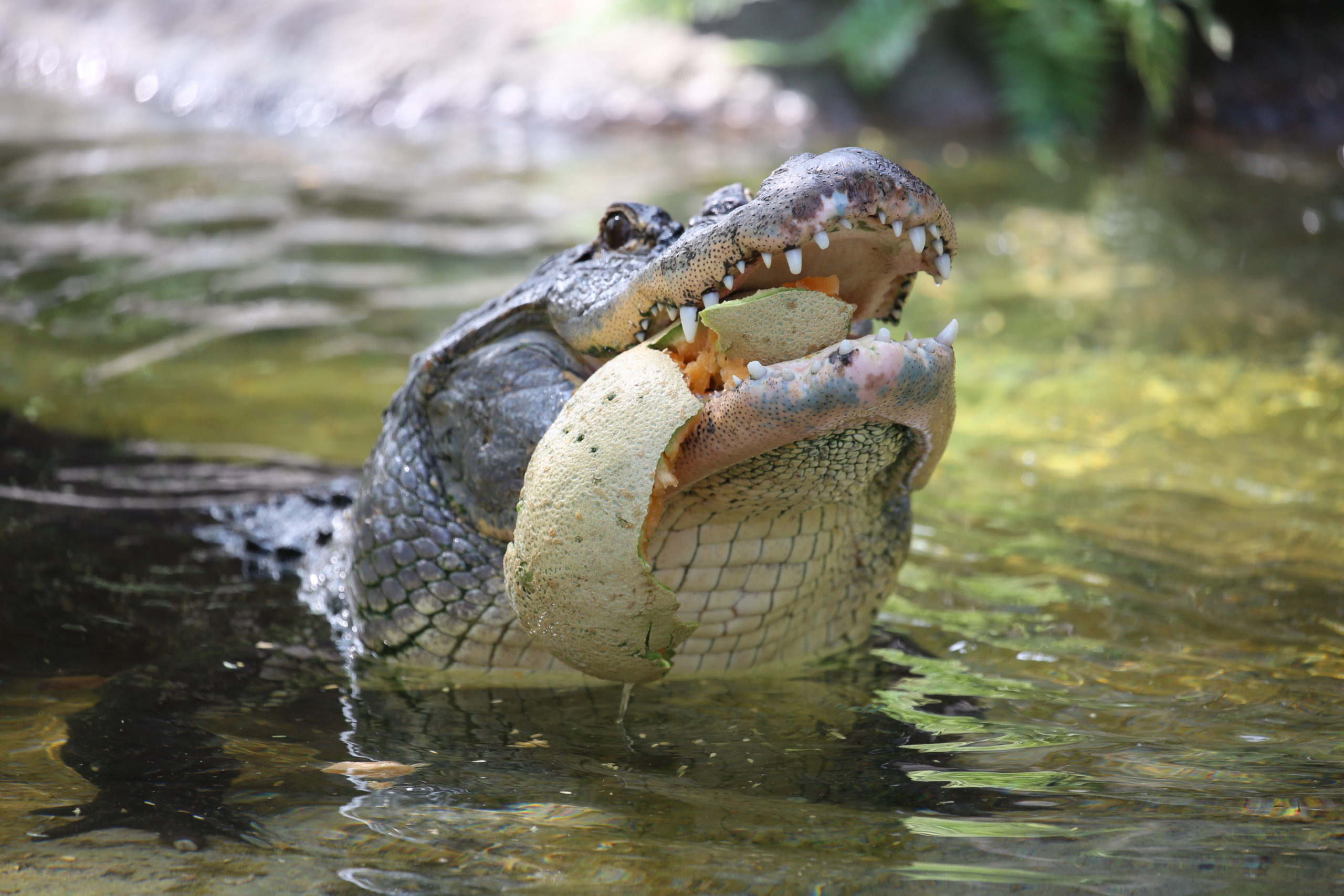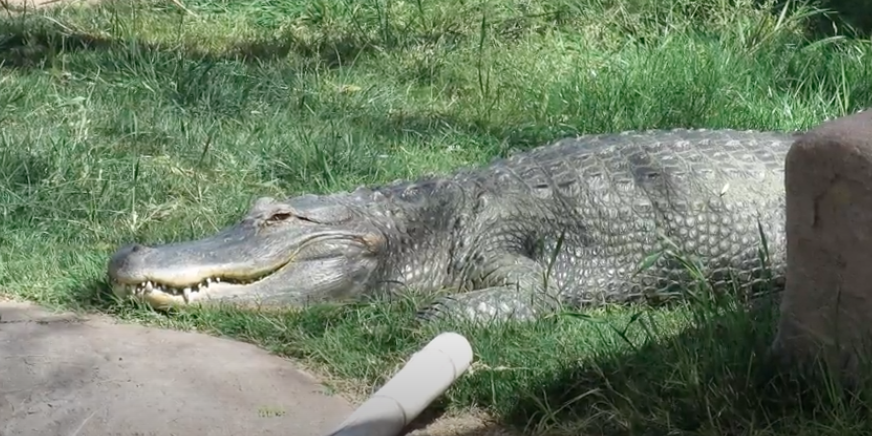American alligators are the largest reptile in North America and can be distinguished by their rounded (or U-shaped) snouts, long powerful tail, thick scales, and webbed toes. They have 74 to 80 conical, sharp teeth and only the upper jaw teeth are visible when the mouth is closed. The eyes and snout are positioned on the top of the head, allowing the alligator to submerge nearly all of its body underwater; this camouflage is further enhanced by their dark olive or black coloration.
Diet: American alligators are carnivorous and prey on animals such as fish, turtles, and small mammals. As juveniles, their diet includes amphibians and small invertebrates such as crustaceans and insects. Alligators are also opportunistic and will feed on carrion and meals caught by other animals. At Reid Park Zoo, the alligator is fed defrosted, whole prey animals as well as specially formulated dry feed.
In the Wild: In the wild, alligators are considered a keystone species, or a species that has an effect on other animals living in its range. In preparation for brumation, alligators dig holes (called gator holes) using their tail and snout. When the alligator leaves, these shallow pools provide water for other animals like snakes, fish, and invertebrates. Though ectothermic, meaning their body temperature is determined by the temperature of the environment around them, alligators can survive freezing temperatures by submerging their body while keeping their nostrils above water to breathe.
Conservation issues/actions: Before the 1950s, alligators were prized for their meat and skin (for leather) and were nearly hunted to extinction. They fully recovered in 1987, and there are now strict laws protecting them from hunting. However, the biggest threat today is the changing climate. Altering weather patterns cause regions to be drier longer, which forces alligators to migrate to new water sources. Additionally, due to the sex determining factor of egg incubation temperature, as temperatures warm most incubated eggs will likely be female or may not survive.
At the Zoo:
Alligators naturally prefer to be covered and camouflaged with their environment. At Reid Park Zoo, we want the alligator to feel secure, but still be visible to guests. Therefore, bamboo poles are positioned over the pool to give the alligator the feeling of cover.



